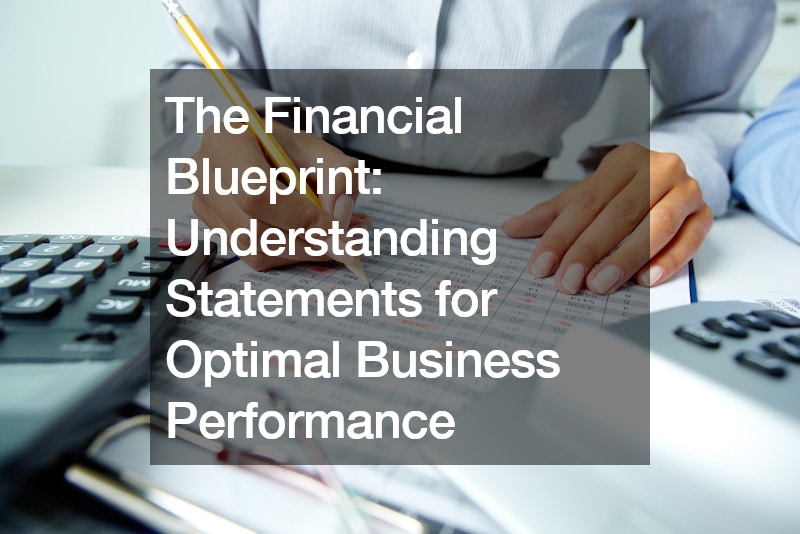
If you’re a business aiming to thrive, understanding financial statements should be your top priority. These statements not only provide a snapshot of your company’s financial health but also help guide strategic decisions that drive growth. This guide will take you through the three main types of financial statements: the balance sheet, income statement, and cash flow statement, and show you how to use them effectively.
The Balance Sheet: A Snapshot of Financial Health
The balance sheet presents a detailed view of your business’s financial standing at a particular moment. It outlines your assets, liabilities, and equity, giving you a clear overview of what your business possesses and what it owes.
Assets are resources owned by your business that hold value. These include cash, office equipment, inventory, and intellectual property such as patents. Assets are categorized into two main types: current and fixed. Current assets are those that can be converted into cash within a year, like accounts receivable or inventory. Fixed assets, such as property or machinery, are long-term investments.
Liabilities represent the debts your business owes. They include everything from short-term obligations like credit card debt to long-term liabilities such as mortgages and bonds. Liabilities are also divided into current liabilities, which are due within the next 12 months, and long-term liabilities, which are due beyond a year.
Equity is the residual value of the company after subtracting liabilities from assets. It encompasses investments made by the owners (like common stock) and retained earnings, which are the profits left over after paying dividends to shareholders.
The balance sheet is governed by the fundamental equation: Assets = Liabilities + Equity. This equation ensures that your financial records are accurate and balanced, providing a reliable snapshot of your company’s financial stability.
The Income Statement: Measuring Profitability
The income statement details how much money your business has earned and spent over a specific period, ultimately calculating your net profit or loss. This statement is crucial for assessing the profitability and operational efficiency of your business.
Revenue is the total income generated from selling goods or services. It’s the starting point of the income statement and reflects the company’s primary business activities.
Cost of revenue (or cost of goods sold) refers to the expenses directly associated with producing or delivering your product or service. This includes materials, labor, and manufacturing costs. Subtracting this from revenue gives you the gross profit, which indicates how efficiently you produce your goods or services.
Operating expenses are the costs necessary to run your business that aren’t directly tied to product creation. These include rent, utilities, salaries of non-production staff, and marketing expenses. Subtracting these from gross profit gives you operating income or loss, reflecting the profitability of your core business operations.
After accounting for taxes and other non-operating expenses, you arrive at the net income, or bottom line. This figure shows the actual profit your business has made after all expenses, providing insight into your overall financial performance.
The Cash Flow Statement: Tracking Cash Flow
The cash flow statement tracks the movement of cash in and out of your business over a given period. Unlike the income statement, which records income and expenses based on accrual accounting, the cash flow statement provides a clear view of your cash situation.
The statement is divided into three sections:
- Cash Flow from Operating Activities: This includes cash generated or used in your core business operations, such as cash receipts from sales and cash payments for operating expenses.
- Cash Flow from Investing Activities: This section covers cash transactions related to investments in long-term assets. It includes purchases of equipment, investments in new projects, and the sale of assets.
- Cash Flow from Financing Activities: This section deals with cash movements related to financing your business, including owner investments, loan receipts, and repayments. It also includes dividends paid to shareholders.
Understanding the cash flow statement is essential for managing liquidity. For instance, a positive cash flow indicates that your business is generating more cash than it is spending, which is crucial for meeting financial obligations and supporting growth. Conversely, a negative cash flow may signal potential financial difficulties and the need for better cash management.
The Financial Close Process: Ensuring Accuracy and Timeliness
An essential part of financial management is the financial close process, which involves finalizing all financial transactions and statements at the end of an accounting period. This process ensures that your financial reports are accurate and complete, providing a reliable basis for decision-making.
The financial close typically involves several steps:
- Gathering Financial Data: Collect all financial information from various departments and systems, including accounts payable, accounts receivable, and payroll.
- Reconciling Accounts: Verify that all accounts are accurate and balanced. This includes reconciling bank statements with your general ledger and resolving any discrepancies.
- Adjusting Entries: Make necessary adjustments for accrued expenses, deferred revenues, and other financial transactions that need to be recorded to accurately reflect the period’s financial activity.
- Reviewing and Finalizing Reports: Prepare and review financial statements, ensuring that they comply with accounting standards and accurately represent your business’s financial position.
- Distributing Reports: Once finalized, distribute the financial statements to stakeholders, including management, investors, and regulatory bodies.
A well-executed financial close process improves the reliability of your financial statements and helps maintain confidence among stakeholders. It also ensures that you are compliant with accounting regulations and ready for audits, ultimately supporting your business’s financial health and success. You may also leverage financial close management software services to enhance the accuracy and efficiency of your financial close, resulting in a smoother and more reliable financial reporting process.
Using Financial Statements for Business Success
Mastering financial statements involves more than just understanding their components. It requires the ability to analyze and interpret these documents to make informed business decisions.
For example, the balance sheet can help you evaluate liquidity by calculating ratios like the current ratio, which is current assets divided by current liabilities. This ratio indicates whether you have enough short-term assets to cover your short-term liabilities.
The income statement allows you to assess profitability and operational efficiency. By regularly reviewing your gross profit margins and operating income, you can identify areas where you may be overspending or where revenue could be increased.
The cash flow statement is crucial for ensuring that you have sufficient cash to cover expenses and invest in growth. Monitoring cash flow helps you avoid cash shortages and plan for future investments.
Regularly reviewing these financial statements, along with using them to create budgets and financial forecasts, will provide valuable insights into your business’s performance and help you make strategic decisions that foster long-term success.
Key Takeaways
Mastering financial statements is key to running a successful business. By understanding and analyzing the balance sheet, income statement, and cash flow statement, and executing a thorough financial close process, you can gain a comprehensive view of your business’s financial health, make informed decisions, and steer your company toward sustained growth and profitability.
.





